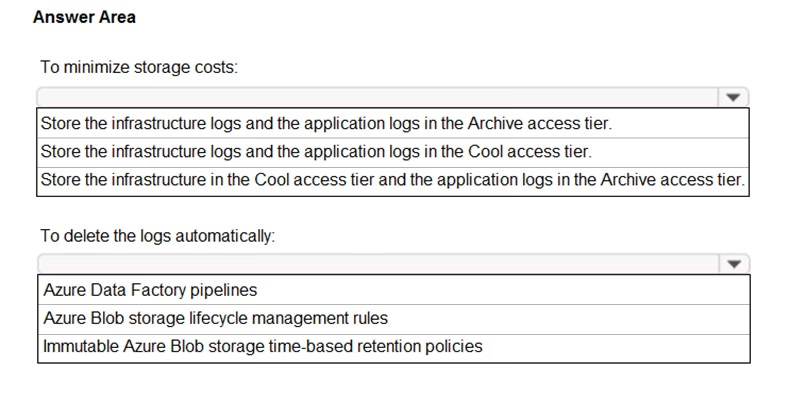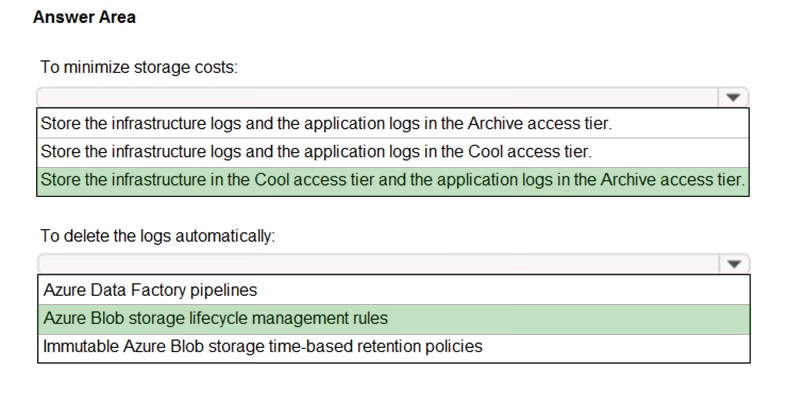HOTSPOT -
You have an Azure Data Lake Storage Gen2 account named account1 that stores logs as shown in the following table.

You do not expect that the logs will be accessed during the retention periods.
You need to recommend a solution for account1 that meets the following requirements:
✑ Automatically deletes the logs at the end of each retention period
✑ Minimizes storage costs
What should you include in the recommendation? To answer, select the appropriate options in the answer area.
NOTE: Each correct selection is worth one point.
Hot Area:

